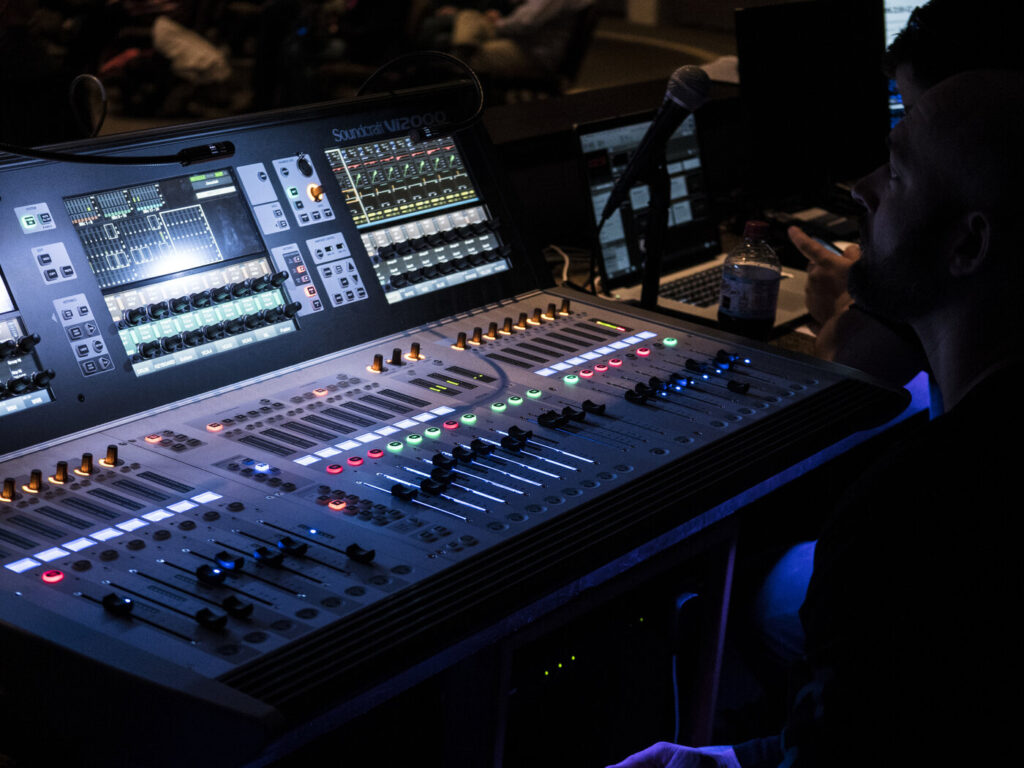Most churches are not built with acoustics in mind. The floor is often concrete, and the walls are thin. On top of this, the sound bounces around the inside of the building and creates echoes.
For this reason, church sound systems are often the subject of complaints ranging from too much feedback, poor sound quality, unclear sound imaging, and inadequate coverage.
Thankfully, there is a definite solution given the way many churches are constructed and the acoustics of their sites referred to as a point source sound system. It is an excellent solution, especially since most churches contain walls made of angled surfaces.
Here are five ways a point source sound system can help resolve common issues in church sound systems:
Adequate Sound Distribution
A church sound system should be designed based on the building structure and on the notion that it is a point source of the sound. This allows the sound to move more directly from the stage to most seating areas instead of bouncing around.
A point source sound distribution system creates a cylindrical sound pattern of audio. This sound pattern is optimal for a church built with several walls made of angled surfaces as it will distribute the sound evenly across a wide area.
Reduced Echoes and Feedback
A point source sound system enables the sound from the stage or pulpit to move more directly to most seating areas instead of bouncing around. This way, the sound can reach the majority of the audience without echoes.
It is typically designed with a microphone that reduces feedback. The feedback is caused by the microphone picking up the sound from the speakers. This can be eliminated by using high-quality microphones positioned strategically to reduce echoes and feedback.
Minimal Distortion
Sadly, many churches mistakenly use sound systems that produce output levels too high for their speakers. This results in distorted audio which can distract audiences from properly receiving the Word or participating in worship.
In a point source sound system, the speaker is positioned high within the church so the microphone does not cause any distortion.
Easy to Build with No Special Acoustic Treatment
The point source sound system is very easy to build and does not require a special structure or design to work. The speaker and microphone can be placed quickly, and the audio will be distributed equally across the congregational seating areas. It is a proven excellent solution to acoustical issues in churches and improves sound quality significantly.
It Is Adaptable, Durable, and Reliable
A point source sound system is adaptable as it can be conformed to different venues locations and sizes. The speakers and microphone can be placed easily for audio to be distributed equally across the congregational seating areas. Moreover, the system is durable and reliable because it is designed to withstand extreme weather conditions and work well in any environment.
Conclusion
A point source sound system is a superb solution for church sound issues. It can be tailored to meet the needs of different types of churches and is designed to produce a surround sound system in any church venue. A good church sound system enables church-goers to focus on the worship and the Word as they should and not get distracted by the subpar sound quality.
At Messenger AVL, we are a full-service design/builders and systems integrators that can help you with everything from sound reinforcement to theatrical lighting to multimedia projection to video production and broadcast. We specialize in the church, house of worship, and educational markets, offering seamless and transparent technology systems.
Underperforming equipment sure limits your innovation, so don’t waste your budget on maintaining aging equipment, stifling creativity. Upgrade the sound technology you use in church. If you want to solve your acoustic concerns with specialized audiovisual equipment for churches, call us today!



